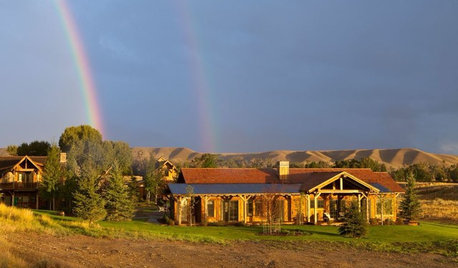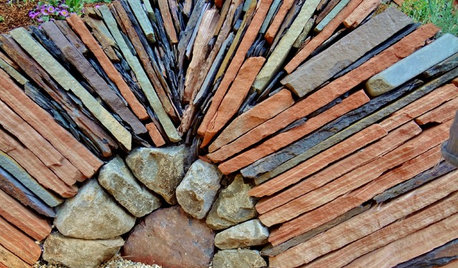Why 'canning'? (tongue in cheek)
Daisyduckworth
17 years ago
Related Stories

COFFEE WITH AN ARCHITECTFind Your Architectural Style
Good funny bones are crucial to great architecture. Bring yours along on a tongue-in-cheek tour through 8 home styles
Full Story
GUESTHOUSESHouzz Tour: Casual Comfort in a Montana Bunkhouse
This building on a ranch compound winks at typical Western style, providing a welcoming and whimsical space
Full Story
DECORATING GUIDESGive Rooms Intrigue With a 'Clash Course'
Introducing the tension of opposites brings unparalleled spirit and energy to interior designs
Full Story
LANDSCAPE DESIGNFollow Nature’s Lead for Artful Stacked Stones
Surprise and delight in the landscape with rock formations resembling wildland hoodoos and cairns
Full Story
For the Boys: 5 Homes With Masculine Energy
Mensware, minimalism, and modern man-friendliness at home
Full Story
LOFTSMy Houzz: Letting Eclectic Style Roll in New Orleans
Behind the graffiti-art exterior of a onetime rice mill, art and antiques playfully mix against a backdrop of brick
Full Story
LIFESlow Living 101: Tips for Turning Off the Chaos
It may feel as though you're too busy to slow down and enjoy life. But even little changes can have a big effect
Full Story
KITCHEN DESIGN12 Farmhouse Touches That Bring Homeyness to a Kitchen
Shaker cabinetry, country-store-inspired hardware, barn elements or a key piece of art will add homestead appeal to your kitchen
Full Story
BEFORE AND AFTERSKitchen of the Week: Classic White Farmhouse Style Restored
A couple remodel their kitchen to better match their 19th-century Oregon home’s style
Full Story



ahbee01
Linda_Lou
Related Discussions
Tongue and Groove Bamboo flooring
Q
beef tongue, yikes!
Q
Tongue, cheek, piercings, etc
Q
Can my Devil's Tongue be saved?
Q
gardenlad
moogies
DaisyduckworthOriginal Author
Darwin_NT
ksrogers
annie1992
ksrogers
annie1992
DaisyduckworthOriginal Author
malonanddonna
ksrogers
jimster
gardenlad
annie1992
flora_uk
ksrogers
Amino_X
DaisyduckworthOriginal Author
gardenlad
annie1992
flora_uk
zabby17
Linda_Lou
annie1992
zabby17
cinsay
zabby17
gardenlad
flora_uk
ksrogers
julsie
jimster
ksrogers
DaisyduckworthOriginal Author
julsie
cateyanne